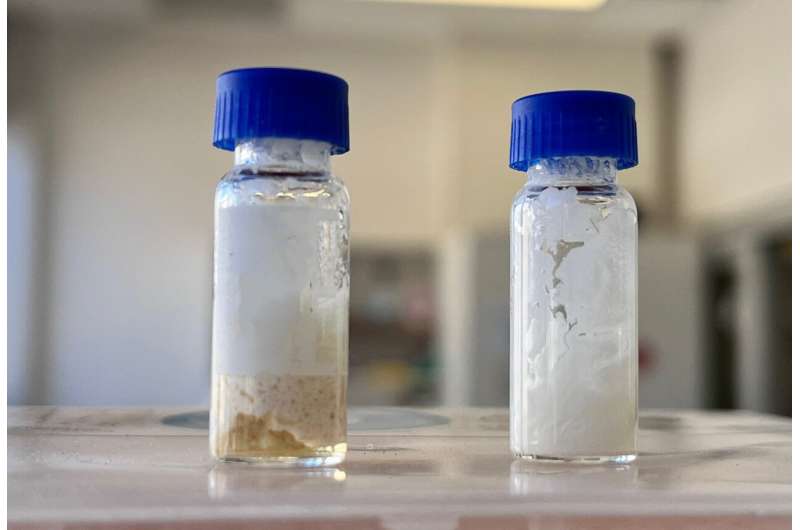This article has been reviewed according to Science X's editorial process and policies. Editors have highlighted the following attributes while ensuring the content's credibility:
fact-checked
peer-reviewed publication
trusted source
proofread
A new spin on organic shampoo makes it sudsier, longer lasting

While there's no regulation in the U.S. for what's in organic shampoos, they tend to contain ingredients perceived as safe or environmentally friendly. However, these "clean" shampoos separate and spoil faster than those made with synthetic stabilizers and preservatives. Now, researchers in ACS Sustainable Chemistry & Engineering demonstrate that a simple process—spinning organic shampoo at high speeds—improved the final products' shelf lives and ability to clean hair.
Natural emulsifiers, such as xanthan gum and cetyl alcohol, are sometimes used to prevent organic shampoo from separating and enhance its soapy lather. However, they don't remain effective for as long as synthetic emulsifiers used in conventional haircare products.
So, Youhong Tang, Colin Raston, and colleagues looked to a technology invented by Raston—a vortex fluidic device (VFD). The team wanted to see if the high-speed spinning platform could work as well as a chemical to improve the lather and shelf stability of organic shampoo without adding to the list of ingredients on the back of the bottle.
Previously, the researchers determined that VFD's intense micromixing could produce clean biodiesel from used cooking oil and homogenize raw milk, but they hadn't used the platform to process more goopy liquids, such as shampoos. They guessed that it could also minimize aggregation of oil droplets and glass microspheres, components in some organic shampoo formulations, thereby maximizing the stability of these personal care products.
To test the theory, the researchers added fresh store-bought organic shampoo to a glass tube tilted 45 degrees and spun it for 15 minutes at 4,500 revolutions per minute. (Their previous work determined this angle and spinning speed were the optimal conditions for processing.)
After 30 days of storage, an unprocessed organic shampoo sample turned from white to yellow and separated into two layers, whereas the spun shampoo didn't change color and remained homogenized. In tests comparing the products' foaming and cleansing abilities, the researchers found that the spun shampoo's lather lasted longer and cleaned human hair more thoroughly.
On a microscopic level, the spun shampoo contained more evenly dispersed oil droplets and glass microspheres compared to the original product. The team says that the result confirmed the hypothesis that VFD processing could be a "green" one-step technique for more stable, emulsified viscous liquids.
Next, they plan to characterize how processing with VFD affects individual components in organic shampoos—like natural surfactants (soaps) and botanical extracts—so they can fine-tune the technique for a broader range of organic shampoos, other natural personal care products, and cosmetics.
More information: Xuejiao Cao et al, Stability and Cleansing Function Enhancement of Organic Shampoo by a Vortex Fluidic Device, ACS Sustainable Chemistry & Engineering (2024). DOI: 10.1021/acssuschemeng.3c08159
Journal information: ACS Sustainable Chemistry & Engineering
Provided by American Chemical Society





















